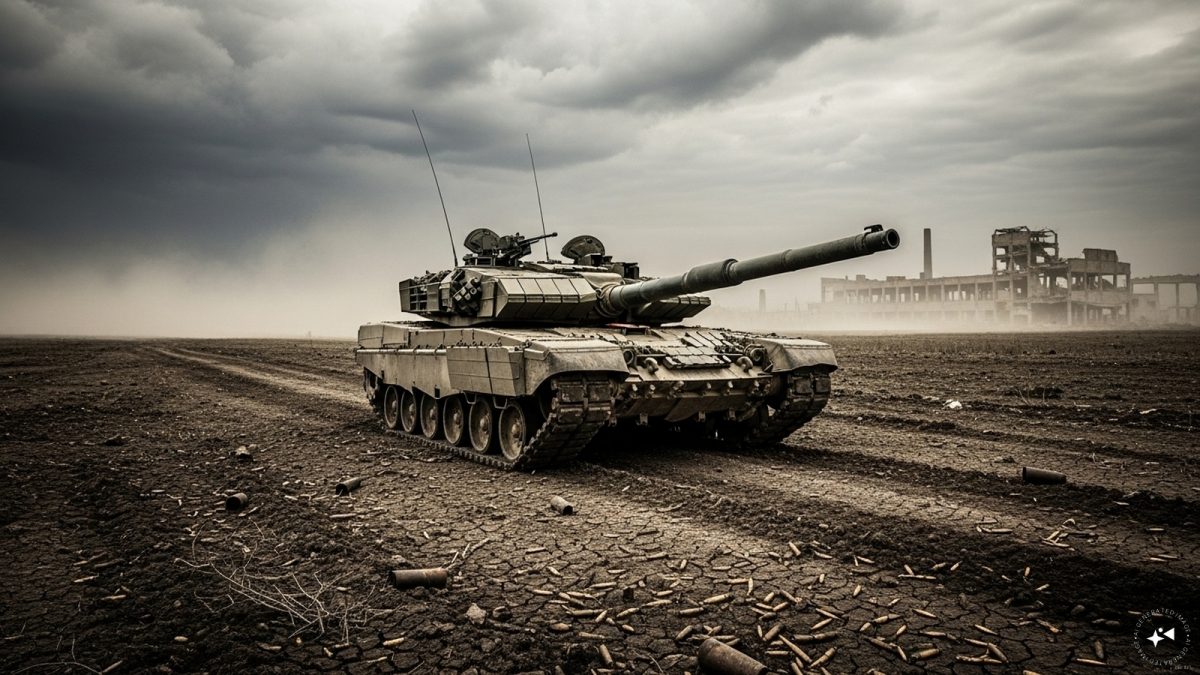Europe is channelling billions into weapons production amid the Russia-Ukraine war, betting defence spending can revive sluggish economies. But can tanks and missiles truly deliver growth?
The continuing war in Ukraine is restructuring Europe’s economic priorities, with governments across the continent funnelling billions into weapons production in the hope that defence spending can simultaneously deter Moscow and revive sluggish domestic economies.
At MBDA’s missile launcher facility in Bolton, Britain’s Armed Forces Minister Luke Pollard watched as engineers demonstrated microelectronic chips — “the brains of the missiles.” The demonstration came as London signed a £118 million ($158 million) contract with the European weapons maker to build six surface-to-air launchers.
Highlighting how governments are now openly linking military build-up with economic recovery, Pollard was quoted by The New York Times as saying “Defence is the engine for growth”
Billions flowing into defence
The trend extends well beyond Britain. Germany’s Rheinmetall is hiring 8,000 workers, partly to offset job losses in the country’s struggling auto industry. Italy has joined the EU’s new defence investment program while Prime Minister Giorgia Meloni is courting weapons manufacturers to channel defence projects into civilian benefits.
The European Commission’s chief Ursula von der Leyen summed it up bluntly: “Economic strength and Europe’s plan to rearm are two sides of the same coin.”
The shift is also geopolitical. Last month, the United States and NATO unveiled the Prioritised Ukraine Requirements List (PURL), a mechanism promoted by President Donald Trump and NATO Secretary General Mark Rutte.
Under PURL, Washington is releasing military hardware from its stockpiles in $500 million tranches for Ukraine, while the Netherlands pledged €500 million ($577 million) and Scandinavian countries jointly committed another $500 million. Sweden said its contribution would cover air defence systems, Patriot munitions, anti-tank weapons and spare parts.
The economic gamble
The spending surge represents a reversal of the post-Cold War “peace dividend,” with governments cutting back on social spending to expand military budgets. Britain’s Prime Minister Keir Starmer has promised a “defence dividend,” framing the build-up as a “once in a generation” opportunity to boost jobs and industrial capacity.
But economists as reported by the NYT, remain divided. Kenneth Rogoff of Harvard University warned: “There’s nothing good about having to buy a tank instead of building a school.” Research shows that while every dollar of military spending increases GDP by about 50 cents, investments in education or infrastructure yield much higher returns.
Others stress that long-term benefits hinge on channelling money into research and development (R&D). Historically, innovations like GPS, the internet and digital imaging emerged from defence-funded research.
“Buying the same old equipment from the same old producers provides limited incentives to innovate,” Ethan Ilzetzki of the London School of Economics told NYT, who co-authored a Kiel Institute report on Europe’s defence economics.
Political stakes
Still, the promise of jobs is politically irresistible. MBDA has hired 2,500 workers in the past year, with plans for 2,600 more by year’s end. Rheinmetall’s new munitions factory in Germany will create 500 jobs. Pollard argued that governments must make the case that military spending not only strengthens security but “helps create jobs; it grows the economy.”
Whether this defence-driven economic push will pay off remains uncertain. The European Commission projects only a modest boost — 0.3% to 0.6% of EU economic output by 2028. But with Russia’s war grinding on, leaders appear willing to wager billions that the path to both security and growth runs through their weapons factories.
End of Article

)

